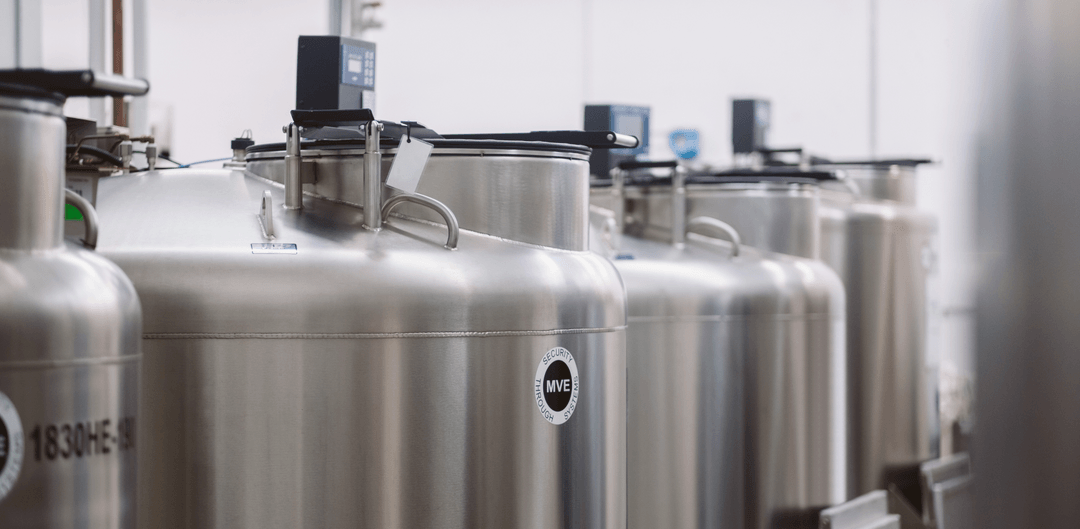When most people hear the term “biobanking,” they immediately think of large-scale studies conducted by governments or research institutions. However, biobanking is quickly becoming a popular way to preserve cells and allows individuals to leverage them for treating diseases and regenerative procedures.
The official definition for biobanking is the process of collecting, storing, and preserving biological specimens for future use including DNA samples, human tissue, and various cell types. Countless studies continue to uncover limitless possibilities associated with using stored cells for medical and regenerative purposes which increases the need for effective cell storage. In this post, we will discuss the basics of this process and provide insight into how biobanking can benefit you in everyday life.
Who Uses Biobanks and What are their Purposes?
Anyone looking to preserve their cells for the future uses Biobanks. Using preserved biological specimens has become a game-changer in regenerative and personalized medicine with applications in assisted reproduction, tissue regrowth, and gene therapy. Individuals that need to heal tissue or restore the function lost due to ageing or other damage have great use for their banked specimens. Clinicians and researchers have also used cryopreserved (stored at low temperatures) patient samples within biobanks along with details of patient conditions in research and complex disease studies making biobanks essential for both personal medicine and research advancement.
Preserving Cells for Assisted Reproduction
When used for fertility reasons, sperm or egg banking can provide much-needed assistance and flexibility to the reproductive process. According to the American Society for Reproductive Medicine, assisted reproduction technologies brought more than 73 000 babies into the world in 2020 which makes egg and sperm biobanking highly beneficial for people looking to conceive.
Individuals who, for any reason, need to store or preserve their eggs or sperm for future use can take advantage of many cryogenic preservation services such as:
- Egg banking is when unfertilized eggs are retrieved from an individual’s ovaries and frozen preserving their viability for future use. They can later be thawed and combined with sperm in a lab and then implanted into the uterus (in vitro fertilization-IVF) allowing women to increase their chances of conception at any age.
- Sperm banking is when sperm is collected and frozen. They are often collected from a provided semen sample and frozen at a constant temperature of minus 196°C. Preserved sperm can be used for intrauterine insemination where sperm is placed directly into the uterus using a catheter or IVF.
- Embryo cryopreservation. Eggs can also be preserved after fertilization for implantation either in the mother or in a surrogate mother for up to ten years. Successful births have also been observed from embryos stored up to thirty years ago.
People undergoing procedures that may weaken sperm or damage eggs such as chemotherapy or sickle cell therapy and those with high-risk jobs such as being in the military can find great advantages in eggs and sperm cryopreservation as it can ensure access to the healthiest sperm and eggs when they are ready to have children. Women also wish to improve their chances of conceiving at an older age due to societal shifts in career progression can also leverage egg biobanking. These biobanking applications alleviate the stress surrounding reproduction and allow more options for future parents.
Preserving Stem Cells for Regenerative Medicine and Treatments
Replacing or regenerating human cells, tissue, or organs to restore normal function has become increasingly popular in the modern day. Stem cells (cells with the ability to differentiate into any other specialized cell) are often injected into the injured tissue for regeneration, or they are used to grow tissue in order to replace the damaged parts.
Stem cell storage is critical for regenerative treatments. Stored stem cells have been used in:
- Hair regeneration, as shown by Gentile et al., 2017, who demonstrated that isolated cells could effectively improve hair density
- Ongoing clinical trials for liver cirrhosis such as how the study by Shi et al., 2021 showed a significant long-term survival rate in patients that had undergone stem cell therapy for cirrhosis and experienced improved liver function.
Stem cells can be collected from blood, urine, adipose tissue(fat cells), bone marrow, and hair follicles with most people having a strong preference for the least invasive method, hair follicles. In adipose tissue banking, professionals use liposuction or biopsy to extract cells and tissue from the patient and isolate the stem cells for future use. They have shown promising results in intervertebral disk regeneration due to their low donor site morbidity, high proliferation rate, and great differentiation abilities. Regenerative medicine continues to explore the possibilities for stem cells, as shown by how bone marrow-derived stem cells facilitate scarless deep wound healing by forming blood vessel networks that assist the healing process.
Umbilical cord cryopreservation has also become popular among parents who would like to stay on top of any potential illnesses that their child may endure. Umbilical cord-derived stem cells (UC-MSC) can be used to treat cardiovascular and skeletal muscle failures and many more diseases. These banks are all over the world including the United States, the UK, Australia, and South Africa.
Stem cell biobanking leverages the ability of the cells to be directed to any desired function which makes its possibilities endless. Additional applications include skin wrinkle reduction and even bone regeneration.
What are the Benefits of Biobanking?
Storing cells for later use has extensive benefits including preserving the genetic integrity of cells, preserving biological samples for a long period, and protecting samples from disease or contamination from microbes. When you bank your cells, this stops their potential exposure to occupational or everyday life carcinogens, and other harmful substances making the healthiest cells available when you need them.
The main benefit is the safety of procedures and treatments because using your own cells (autologous therapy) does not raise an immune response like when you use foreign cells. In many studies, when cells are administered for treatment such as when hair follicle cells were injected into mice to initiate hair regeneration, their immune responses had to be suppressed to allow the body to use the cells to grow new hair. However, in humans, suppressing the immune system can be dangerous as it increases disease susceptibility. So, when an individual’s cells are used in regeneration treatments this bypasses the need for immunosuppression.
Leveraging Biobanking Technology for Health, Fertility, and Aesthetics
Regenerative applications are the future of biobanking in a rapidly changing world. Your cells can be used to regrow hair, treat illness, and repair skin and other damaged tissues. Acorn Biolabs provides cryogenic preservation services for stem cells with non-invasive extraction from your hair follicles. With Acorn’s stem cell storage services, you are able to bank your hair follicles and access younger cells for future regenerative treatments as they become available. Click here to learn more.

